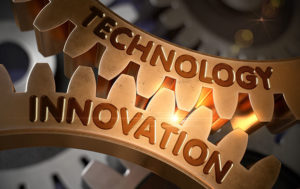
Hybrid and electric vehicles have marketed as the “cars of the future,” but consumers just aren’t getting in gear with alternative powertrains; neither hybrids nor electrics are rolling down the road in great numbers.
Although each year sees the introduction of new hybrids at auto shows, the most notable being the North American International Auto Show currently drawing crowds in Detroit, most consumers are still buying proven, well understood gasoline-powered autos rather than hybrids. Just don’t blame the makers for not pushing to get hybrid technology rolling.
“The manufacturers have been trying for a while,” said Tom Libby, lead analyst for North America forecasting for Polk. “Hybrid penetration is under 3 percent [of domestic market share] and electric is under 1 percent.”
Manufacturers are losing money, and yet the prices for these vehicles remain at a premium.
“That isn’t an easy issue to resolve,” Libby told TechNewsWorld.
Growth Market
This isn’t to say that the market for hybrid and electric vehicles is stagnating. In fact, 2013 could see some growth — just not at the breakneck speed that the supporters of the technology would like.
“In 2012, U.S. consumers bought 427,605 hybrids, up from 261,507 in 2011,” said Tom Murphy, executive editor at WardsAuto World.
That is a 64 percent increase, and hybrids as a group actually outsold most segments in 2012, including SUVs, midsize luxury cars and small cross/utility vehicles. Further, sales of hybrids, electric vehicles and plug-in hybrids have continued to grow for the past decade, according to WardsAuto data.
Although there was a slight dip for the segment in 2010 and 2011, likely tied to falling gasoline prices following the economic downturn of 2008-2009, the segment came back in 2012, when 3.3 percent of new light vehicles sold in the United States had alternative drivetrains.
Another shift is that it’s no longer just Asian carmakers in the driver’s seat.
“A market once pioneered and dominated by the Japanese now is populated by the Europeans, and not only in the luxury car segment,” said Murphy. “Volkswagen is launching the new competitively priced Jetta Hybrid in the U.S., and it’s arguably a hybrid of a different stripe, with a peppy engine and sophisticated transmission. It’s a lot of fun to drive, which you haven’t been able to say about all hybrids.”
Model Designs
Although companies such as Volkswagen, BMW and even Rolls-Royce are entering the market, one of the main reasons that electric and even hybrid cars have failed to connect with drivers is that these tend to be in the luxury auto price point, but aren’t exactly the most stylish of rides. As a result, consumers who may be willing to spend more on a car often look at something that is, simply put, “sexier.”
“The alternative powertrain vehicles at this point are pretty much vanilla cars,” said Justin Cupler, editor-in-chief at TopSpeed.com. “That’s changing — but probably not quickly enough to turn heads. Fisker is putting the hybrid electric powertrain in its sexier cars, and Tesla is coming around with more mainstream vehicles.”
“It really is about getting more manufacturers into the market and giving consumers more options,” Cupler told TechNewsWorld.
Going the Distance
The other big downside to alternative powertrains is one that has plagued the technology since the beginning — namely that such cars really can’t go the distance. Their limited performance remains one of many problems that need to be overcome before most consumers will get behind the wheel of hybrids and electrics.
The root of these problems is the battery.
“Battery technology remains problematic,” said Murphy. “Auto makers have reached a plateau in terms of energy density in batteries, but a breakthrough seems inevitable.”
Whatever form that breakthrough takes, automakers hope it happens soon. U.S. government regulations will call for improved performance and more miles per gallon than conventional internal combustion technology can deliver.
With the U.S. government requiring every automaker’s fleet to achieve average fuel consumption of 35.5 miles per gallon by 2016, it’s highly unlikely the segment for hybrids will be shrinking in the near future.
“This technology [continues] to be driven by regulation,” said Veerender Kaul, vice president of research for North America automotive & transportation at Frost & Sullivan. “This is the main driver of powertrain technology in the United States, as well as globally. It is part of the desire of the markets to meet emissions standards.”
“If there was no regulation you would probably not see these vehicles at all,” he added.
Speed Bumps Ahead
However, hybrids face more speed bumps in the road ahead. Fuel costs play a factor in consumers’ purchasing decisions; relatively low gasoline prices make hybrid and electric vehicles less attractive to potential buyers.
Given current fuel costs and the difference in purchase prices for comparable gasoline-powered cars on the one hand, and hybrid and electric vehicles on the other, there is no way for the owner to recover the additional cost of a hybrid vehicle, Kaul told TechNewsWorld. “If the price of fuel remains the same, the [alternative] vehicle must come down in price.”
Rebates and other incentives from the federal and state governments have played a part in purchase decisions. Without these subsidies, there would be almost no demand, he claimed. “These vehicles have a higher cost and there is not much incentive for people to buy one at this current cost structure.”
3 Roads to Success
For the adoption of hybrid and electric vehicles to pick up speed, three things would need to occur, and pulling all this together could require as much luck as avoiding rush hour traffic in the morning. They involve initial vehicle cost, range, and the difference in operating costs between conventional drivetrains and their alternatives.
“Vehicle cost would, of course, have to come down,” reaffirmed Kaul, “but the capability of the vehicle has to be improved, as does the charge time.”
Here again, that plateau of battery technology is the biggest issue, because all three solutions center on the battery.
“The battery is the single most expensive part of the vehicle,” said Kaul. “So it won’t be so easy to reduce the cost.”
The range that the cars can travel and the time it takes to juice them up are the other parts of the problem, even with hybrid electric cars, which can run on the battery and recharge on the gasoline engine.
“Range is a big issue right now,” confirmed Cupler, adding that gas mileage suffers when an engine that provides motive power is also charging a battery.
Getting the Most From the Gas
Another thing that shouldn’t be overlooked is the fuel itself. The automakers continue to wring improved gasoline mileage out of existing technologies with new techniques such as gasoline direct injection (GDI), which involves injecting highly pressurized fuel into the combustion chamber of the cylinder, where conventional fuel injection systems do so into the cylinder port. It represents a rare chance to lower emissions, improve efficiency and raise output, all at once.
“Every vehicle maker in the next five or six years will adopt the gasoline direct injection,” predicted Kaul.
Even without radical changes to engine designs, automakers have incentives to find room for improvement. Add subtle changes to more obvious innovations, and the fuel efficiency could further put hybrid adoption in the slow lane.
“We believe that by reducing the weight of the vehicle, improving the aerodynamics and improving the road resistance on the tires … these three areas could mean improved overall efficiency,” noted Kaul.
Combining such enhancements with a conventional engine, he argued, could lead to a 20 to 25 percent improvement in fuel efficiency.
“Automakers are advancing internal combustion engines [at the same time] as they are looking at hybrids and electrics — which at some point, to keep up with increasing regulation, will be a significant part of the car makers’ fleets,” Kaul added. “It is being developed in parallel.”
Fuel prices remain the wild card, of course, and alternative fuel powertrains are likely to remain a niche that will only slowly pick up speed. For these reasons, it is too early to say whether hybrids or full-fledged electrics will win out in the end.
“This issue of powertrain is very much unsettled,” said Polk’s Libby. “We’re seeing manufacturers pursuing multiple options in terms of the technology. For now, it is unknown exactly which way the industry is going to go.”





















































